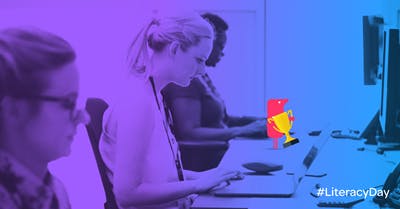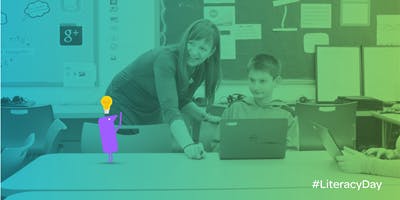No language barriers: ILD celebrates literacy and multilingualism
There’s something wonderful about the word ‘polyglot’, isn’t there? You might think it’s an exotic skill that few of us possess – but over half of all Europeans speak at least one language other than their mother tongue.
There are reckoned to be anything around 7,000 languages spoken in the world today. A multilingual speaker – or polyglot – may be able to communicate in half a dozen of them. Linguist Michael Erard extends this with the definition of a ‘hyperpolyglot’, an individual whose language tick-list stretches into double figures.
On September 8th, UNESCO’s International Literacy Day turns the spotlight on the diversity of language and its fundamental importance for individuals and society as a whole. Held annually since 1967, ILD reminds us of the vital importance of literacy as a basic educational right for all, and its role as a cornerstone for individuals’ empowerment and inclusive, sustainable development.
The specific theme of this year’s ILD is ‘Literacy and Multilingualism’, as reflected in one of the United Nations Foundation’s Sustainable Development Goals that aims to ‘ensure inclusive and equitable quality education and promote lifelong learning opportunities for all.’
UNESCO notes in its commentary on ILD that people and societies are more connected and interdependent than they’ve been at any time in the past. And as UNESCO observes, the combination of instantaneous digital communication and greater human mobility has extended multilingualism far beyond its traditional geographical boundaries.
We all know that technology has made our world a much smaller place. Radio, TV and the Internet have connected us as never before, giving instant access to a dizzying breadth of different voices, opinions and cultural perspectives. Tech has also created a truly global workforce, as companies routinely off-shore jobs ranging from software development and financial services to customer care and support functions.
Putting digital technology aside for a moment, modern society is far more socially, culturally and linguistically diverse than at any time in the past. Freedom of movement – at least in countries where it’s permitted to a greater or lesser extent – has changed labor patterns profoundly. Here in the UK for example, some 140,000 of 1.2 million National Health Service employees are foreign nationals: that’s one in eight of the total NHS workforce.
In this increasingly diverse world, technology plays an important role in overcoming language differences. How many of us bother to pack a phrase book for our holidays when the translation for ‘what time’s the next bus?’ is a quick Google search away? Impressive advances in AI and machine learning have made the long-held dream of word-perfect real time conversation between two or more different language speakers achievable in the very near future. Imagine a surgeon, pilot or emergency worker being able to converse fluently and accurately with colleagues when they can’t speak a word of each other’s respective languages.
There’s a lot to excite us about technology’s role in lowering language barriers. But on the eve of International Literacy Day let’s acknowledge the challenges we face as a linguistically diverse society – and the role that technology can play in unlocking the full potential of those who are marginalized and excluded by language differences.
At school and in the workplace, lack of fluency in your fellow students’ or co-workers’ native language is a profound obstacle to educational, personal and professional development. Over the last 20 years at Texthelp we’ve been committed to use technology creatively to level the literacy playing field for everybody. And that’s why we’ve always baked multilingual features into our products that help people read, write and express themselves with clarity and confidence - even when they’re using a language that’s not their first (or their second, or third).
As we celebrate this year’s International Literacy Day, it’s an ideal moment to reflect on how far technology has already brought us in supporting literacy and multilingualism, in both education and the workplace. At the same time, however, we must not be complacent when there’s still so much more to do.
Where do you think technology’s heading next? I’d love to hear your own thoughts about the future of literacy, and tech’s constantly evolving role in lowering language barriers still further.



